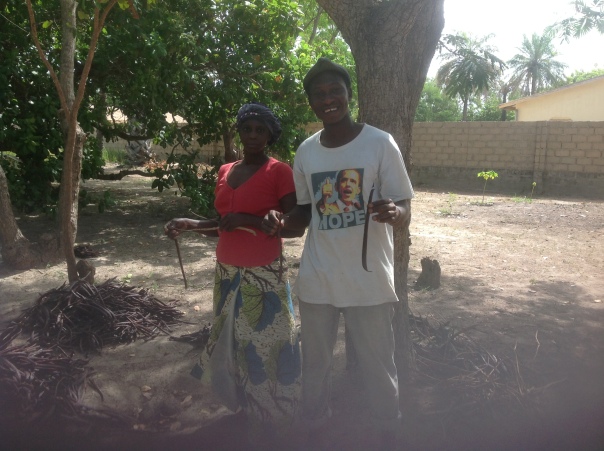The Observer has reported that the first tourist flight of this season has arrived in The Gambia.
The maiden flight for the 2014/2015 tourism season Saturday evening touched down at the Banjul International Airport (BIA), officially marking the beginning of the season.
The flight, carrying 200 tourists, was received by officials of the Ministry of Tourism and Culture, the Gambia Tourism Board (GTBoard), grand tour operator, Gambia International Airlines (GIA) and members of the press.
The Thomas Cook UK flight Boeing 757-200 with inscription G-FCLK and British flag, touched Banjul exactly at 19:30 hours.
Tourism and Culture Minister Benjamin A. Roberts, who was present at the foot of the aircraft, pleasantly welcomed the tourists to the Smiling Coast of Africa.
Speaking to the press at the airport arrival hall, Minister Roberts indicated his impression over the arrival of the Thomas Cook UK flight to the destination. The minister stated that a lot has been done to extend the season from six months to eight months before the sudden challenge of Ebola Viral Disease (EVD), which is present in some West African countries since February, this year.
With the arrival of Thomas Cook UK flight, the minister said it is impressive and that it gives sense of optimism for the current season taking into account the fact that the carrier is a “key player in the sector”.
He however indicated that prior to arrival of Thomas Cook, Arky Airline on Wednesday flew in a numbers of tourists from Holland. He expressed hope that in the month of November, a deeper understanding of how the season would look like in terms of postponed flights would have been established.
The acting director general of GTBoard, Ousainou Senghore, described the arrival of the 200 tourists as “very impressive”, saying it will go a long way towards helping the sector to achieve its target for the 2014/2015 tourism season.
“This is a sign of confidence to have first flight fully booked with 200 passengers,” he said. He added that it was a clear sign that GTBoard marketing strategy and sensitisation against the EVD are going well so far, thus expressing hope that this season will be equally great.
Though Thomas Cook is doing one flight a week for the month of October, acting DG Senghore however noted that so long the drive is there, the number of the demand will surely increase.
The Operations manager at Gambia Tours, Christine Azar, expressed delight at the start of the Thomas Cook UK flight for the month. She said despite the challenges currently facing the African Tourism sector, her institution is very happy to see that Thomas Cook continued to make the flight to Destination Gambia.
She expressed hope that Thomas Cook will continue flying to Destination Gambia until the end of May 2015 as planned. She said the flight will come once a week this month, but hopefully it will increase the number in next month.








